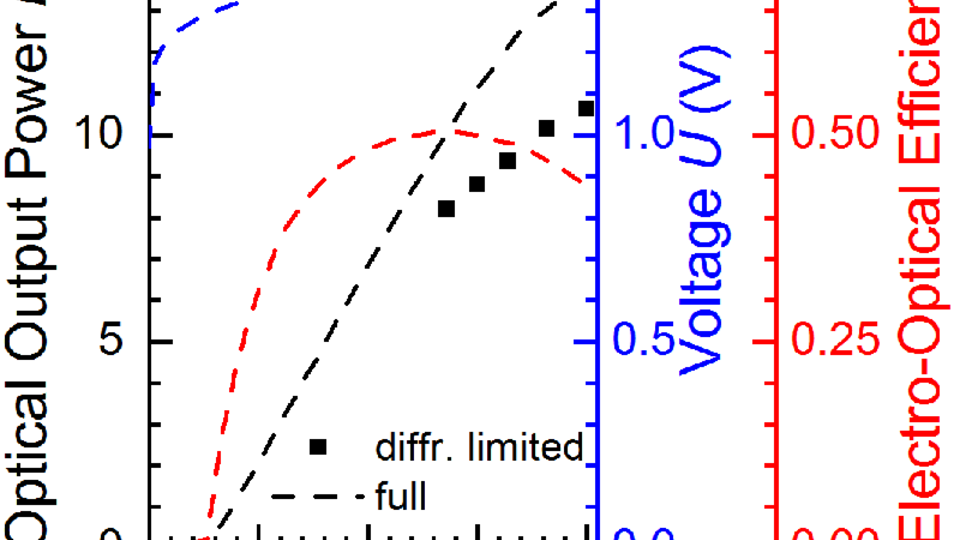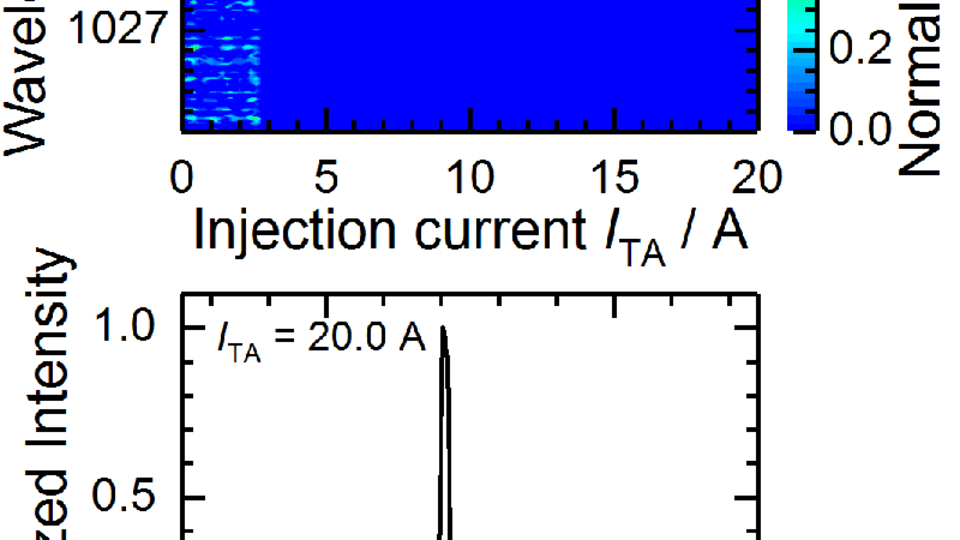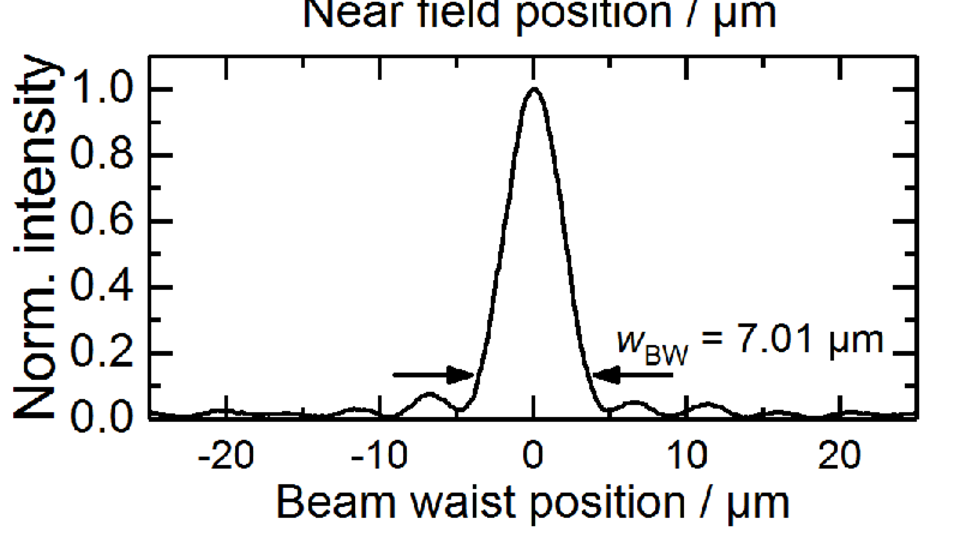1030 nm DBR tapered diode laser with over 10 W diffraction limited output power
Fig. 1 Power-voltage-current characteristics for the DBR tapered diode laser. Black squares: diffraction limited power of the central lobe.
Fig. 2 Emission spectrum as a function of the injection current applied to the tapered amplifier (top), single emission spectra at ITA = 20 A (bottom).
The rapidly growing field of biomedical imaging depends heavily on the development of ever more specialized and tailored light sources. Of special interest are high-power, diffraction-limited coherent light sources with a narrowband emission in the green spectral range as a pump source for Titanium:Sapphire lasers. Direct green light emitting diode lasers are available but not suitable yet, due to poor spatial beam quality and insufficient output power. Therefore frequency conversion of near-infrared diode lasers currently remains the method of choice. Suitable diode lasers should ideally provide several watts of near-diffraction limited output power and spectral bandwidths below the acceptance bandwidths of non-linear crystals, typically < 100 pm.
The Ferdinand-Braun-Institut is one of key driving forces in the development of near-infrared tapered diode lasers. With more refined production methods and new design concepts we were able to produce diode lasers that are capable of emitting over 10 W diffraction limited output power at 1030 nm within a narrow bandwidth < 30 pm. This is an increase of over 25 % in output power compared to the previous laser design [1].
The here presented results were achieved with a distributed Bragg reflector (DBR) tapered diode laser with an asymmetrical super large optical cavity vertical layer structure. The device is 6 mm long and consists of 3 sections: A 1 mm long passive DBR grating with an optimized lateral layout, a 1 mm long ridge waveguide (RW) section, and a 4 mm long tapered amplifier.
In Fig. 1 the optical output power of the device is shown as a function of the TA injection current ITA for a RW injection current IRW = 200 mA at 15°C. Laser operation starts at ITA = 2.6 A and a maximum optical output power of 13.6 W is nearly diffraction limited and emitted at ITA = 20 A with an electro-optical efficiency of 44 %. Above ITA = 18 A the diffraction limited output power (black squares) exceeds 10 W. The emission spectrum is plotted as a function of the TA injection current in the top graph of Fig. 2. Over the complete measured parameter range the lasers provide narrowband emission. The bottom graph in Fig. 2 shows a single spectrum extracted from the top graph at ITA = 20 A. Even at such high injection currents the laser shows spectral single mode emission with a bandwidth < 30 pm. In Fig. 3 the normalized intensity distributions of the near field, beam waist and far field are shown for a TA injection current ITA = 20 A. The measured near field has a slightly modulated top hat profile and a width of wNF = 377.6 µm which is somewhat smaller than the actual front facet aperture of 420 µm. The beam waist profile has a defined 7 µm wide central lobe with a power content of 78 % and only minor side modes. The measured far field divergence angle is 12.4 °, resulting in a beam propagation ratio M2CL = 1.1.
Compared to previous approaches for DBR tapered diode lasers, the impact of optimized lateral waveguide and grating layouts may help to increase the application potential of such devices.
Publication
[1] A. Müller, J. Fricke, F. Bugge, O. Brox, G. Erbert, and B. Sumpf, "DBR tapered diode laser with 12.7 W output power and nearly diffraction-limited, narrowband emission at 1030 nm", Applied Physics B, vol. 122, no. 4, Apr. 2016.


